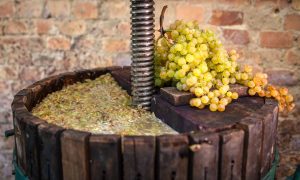What is dissolved oxygen?
Oxygen is an essential part of life, playing a key role in many biological and chemical reactions. Dissolved oxygen (DO) describes the amount of free molecular oxygen (O2) dissolved in solution, usually expressed in milligrams per liter (mg/L), parts per million (ppm), or percent saturation (% sat).

Managing wine’s exposure to oxygen is crucial to crafting a fine tasting product. While small amounts can enhance flavors, creating a softer texture and introducing dynamic tastes, it is best to keep levels of dissolved oxygen as low as possible. Oxygen exposure can be beneficial during fermentation, but can be detrimental and should be minimized during movement, fining, bottling and aging of wines.
How much is too much?
The concentration of molecular oxygen measured in the wine before bottling should ideally be less than 0.5 mg/L.
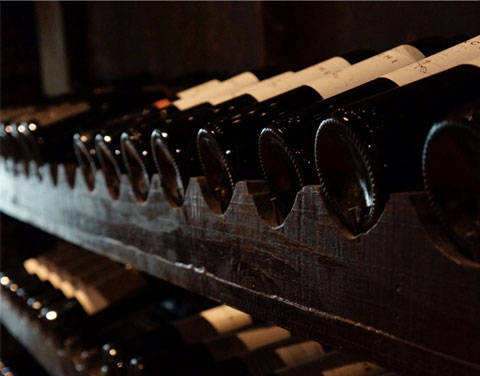
What influences oxygen’s presence in solution?
Oxygen is present everywhere the atmosphere is made up of 21% oxygen along with other gases including nitrogen. The degree to which oxygen will dissolve into wine when exposed to air is influenced by its temperature and atmospheric pressure. pH plays a role in determining how oxygen reacts once already present in the solution.
- Air Exposure – Exposure to air results in an increase of dissolved oxygen uptake. The level of increase is dependent on pH, temperature and atmospheric pressure.
- Temperature – Cold temperatures increase oxygen solubility in wine, while the reverse is true for warm temperatures.
- Atmospheric Pressure – Oxygen solubility in wine is highly dependent on partial pressure between the wine and the atmosphere. As atmospheric pressure increases, the rate at which oxygen dissolves into a solution increases.
- pH – As the pH of wine increases and becomes more alkaline, the effectiveness of molecular SO2 as an antioxidant is greatly lessened. This means there is more unbound oxygen present in the wine, thus increasing the chance for oxidation to occur.
How does oxygen affect wine quality?
Fermentation
- Oxygen can stimulate fermentation in the first few days by improving the permeability of yeast cells to take in more glucose.
- The presence of molecular oxygen is required for the synthesis of lipids and steroids essential for functional cell membranes.
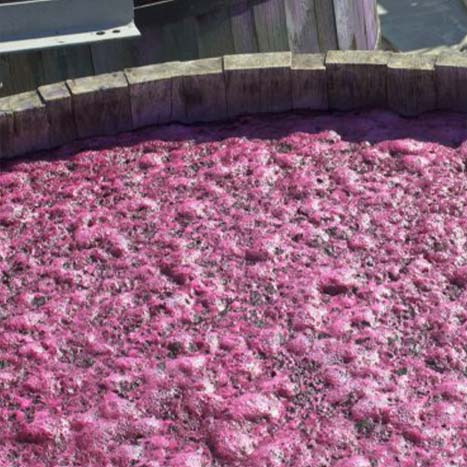
Color
Dissolved oxygen can react with phenolic compounds to form quinones which can affect the color of the wine. As oxidation progresses, the rate of color change will slow until stabilization is achieved.
- In white wines, phenols such as catechins and leucoanthocyanins are converted to brown pigments, sometimes producing an undesired haze.
- Pinking, the name given to the development of a red blush in white wines, is the result of rapid conversion of flavenes to their corresponding salts due to the reduction of oxygen.
- Color can precipitate out in red wines, resulting in a lighter finished product. Anthocyanins polymerize with other flavonoids causing reds to take on a brick-red or brown color.
Aroma, Flavor and Texture
Excess oxygen results in:
- Loss of fruit characters
- Reduced or altered aroma
- Increase in bitterness as a result of the development of acetaldehyde
Chemical Composition
The introduction of oxygen results in:
- Lower antioxidants
- Formation of acetaldehyde: On average, red wines contain 30 mg/L, white 80 mg/L, and Sherries 300 mg/L. At low levels acetaldehyde can contribute pleasant fruity aromas to a wine. At higher levels the aroma is considered a defect, resulting in a rotten-apple like smell.
- Microbial spoilage: Exposure to oxygen allows unwanted bacteria and yeast such as Acetobacter aceti, Lactic acid bacteria, and Brettanomyces to thrive.
Where is oxygen introduced during the winemaking process?
Oxygen can be introduced into wine at various stages during the process.
Possible points include:
Possible points include:
Crushing and Pressing: The physical process of removing the grape pulps from skins, seeds, and stems can cause high amounts of oxygen to be introduced into the must or juice.
Fermentation: During this stage, red musts can go through a “pumpover” or “punch down” to allow for pigment and compound extraction from the grape skins and, in some cases, the addition of oxygen to stimulate fermentation.
Racking, Pumping, and Filtration: Oxygen is introduced when wine is moved from one container to another. Small amounts of oxygen can enter through the porous membranes of filtration pads and diatomaceous earth systems, while mechanical pumps and loose fittings can introduce oxygen into the wine as the product is moved.
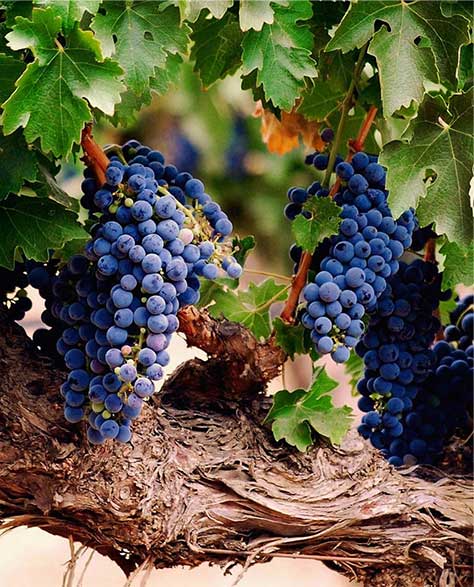
Cellar Aging: This is typically done in wood barrels or stainless steel containers. Wood barrels can result in the slow addition of oxygen through the porous wood as compared to stainless steel tanks.
Bottling: Oxygen must be closely monitored to ensure minimal impact on wine quality during final filtration, filling of bottles, and closure procedures. This is the final stage at which oxygen can be unintentionally introduced, thus having a detrimental effect on the finished product.
Bottle Aging: Oxygen present in the headspace of bottles or let in through closures can spoil wine over time. Closure styles are an important consideration when trying to maintain the quality of bottled wine.
- Screw top: Consistently lets in very little oxygen
- Natural cork: Oxygen transmission varies depending on quality. High quality cork lets in very little oxygen while lesser quality lets in more.
- Synthetic stopper: Allows oxygen to enter into the bottle at higher rate than a screw top or natural cork closure.
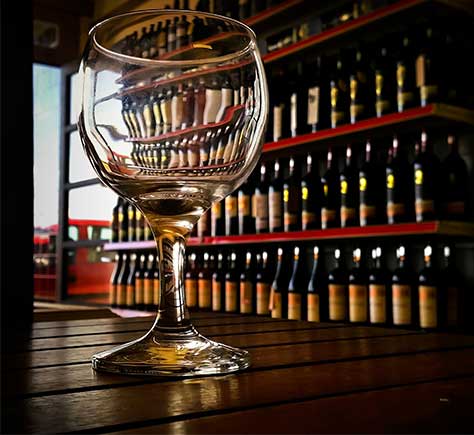
At what points during the winemaking process should oxygen be measured?
There are several stages where it is important to measure dissolved oxygen:
1) During racking and tank movements.
2) Before and after filtration.
3) Throughout the aging process.
4) After processing and before bottling.
5) In the final, bottled product.
2) Before and after filtration.
3) Throughout the aging process.
4) After processing and before bottling.
5) In the final, bottled product.
Monitoring levels of dissolved oxygen at these points not only helps to produce a fine tasting wine, but also ensures equipment efficiency throughout the production process.
How can oxygen levels be minimized?
There are ways to control oxygen exposure and thus reduce levels of dissolved oxygen in wine.
Oxygen Displacement: Empty lines, tanks, and bottling equipment can be flushed of oxygen with the use of inert gases before filling. Nitrogen, carbon dioxide, sulfur dioxide and argon are the most commonly used gases due to their ability to displace oxygen. Frozen CO2 and dry ice can be used to blanket equipment, keeping oxygen from entering. Sparging, or the passing of small N2 bubbles through the wine itself, displaces dissolved oxygen molecules (as well as other gases), reducing their levels.
Antioxidant Treatment: Sulfur dioxide (SO2) can be added to wine where it binds with dissolved oxygen, making it more difficult for oxidation to occur.
To measure dissolved oxygen you can simply use
HI98198
Optical Dissolved Oxygen Meter
The HI98198 opdo™ meter is a rugged, portable dedicated dissolved oxygen (DO) meter designed for fresh and saltwater measurements of dissolved oxygen. This professional, waterproof meter complies with IP67 standards and measures DO, barometric pressure, and temperature. The HI98198 is supplied with a HI764113 digital optical dissolved oxygen probe in a custom thermoformed durable carrying case with accessories. It is compact and ergonomically designed to provide ready access to the materials required for routine sampling.
Author:
Tajana Mokrović, mag.nutr.
Tajana Mokrović, mag.nutr.
Source:
1) Boulton, Roger B. Principles and Practices of Winemaking. New York: Springer, 1999. Print.
2) Liu S.Q. and G.J. Pilone. 2000. An overview of formation and roles of acetaldehyde in winemaking with emphasis on microbiological implications. International J. of Food Science and Technology 35:49-61 4. Impact of Storage Position on Oxygen Ingress through Different Closures into Wine Bottles
3) Paulo Lopes, Cédric Saucier,Pierre-Louis Teissedre, and, and Yves Glories. Journal of Agricultural and Food Chemistry 2006 54 (18), 6741-6746. DOI: 10.1021/jf0614239
4) Singleton, V.L. 1987. Oxygen with phenols and related reactions in musts, wines, and model systems: Observations and practical implications. Am. J. Enol. Vitic. 38:69-77.
5) Zoecklein, Bruce W. Wine Analysis and Production. New York: Kluwer Academic/Plenum, 1999.
2) Liu S.Q. and G.J. Pilone. 2000. An overview of formation and roles of acetaldehyde in winemaking with emphasis on microbiological implications. International J. of Food Science and Technology 35:49-61 4. Impact of Storage Position on Oxygen Ingress through Different Closures into Wine Bottles
3) Paulo Lopes, Cédric Saucier,Pierre-Louis Teissedre, and, and Yves Glories. Journal of Agricultural and Food Chemistry 2006 54 (18), 6741-6746. DOI: 10.1021/jf0614239
4) Singleton, V.L. 1987. Oxygen with phenols and related reactions in musts, wines, and model systems: Observations and practical implications. Am. J. Enol. Vitic. 38:69-77.
5) Zoecklein, Bruce W. Wine Analysis and Production. New York: Kluwer Academic/Plenum, 1999.




